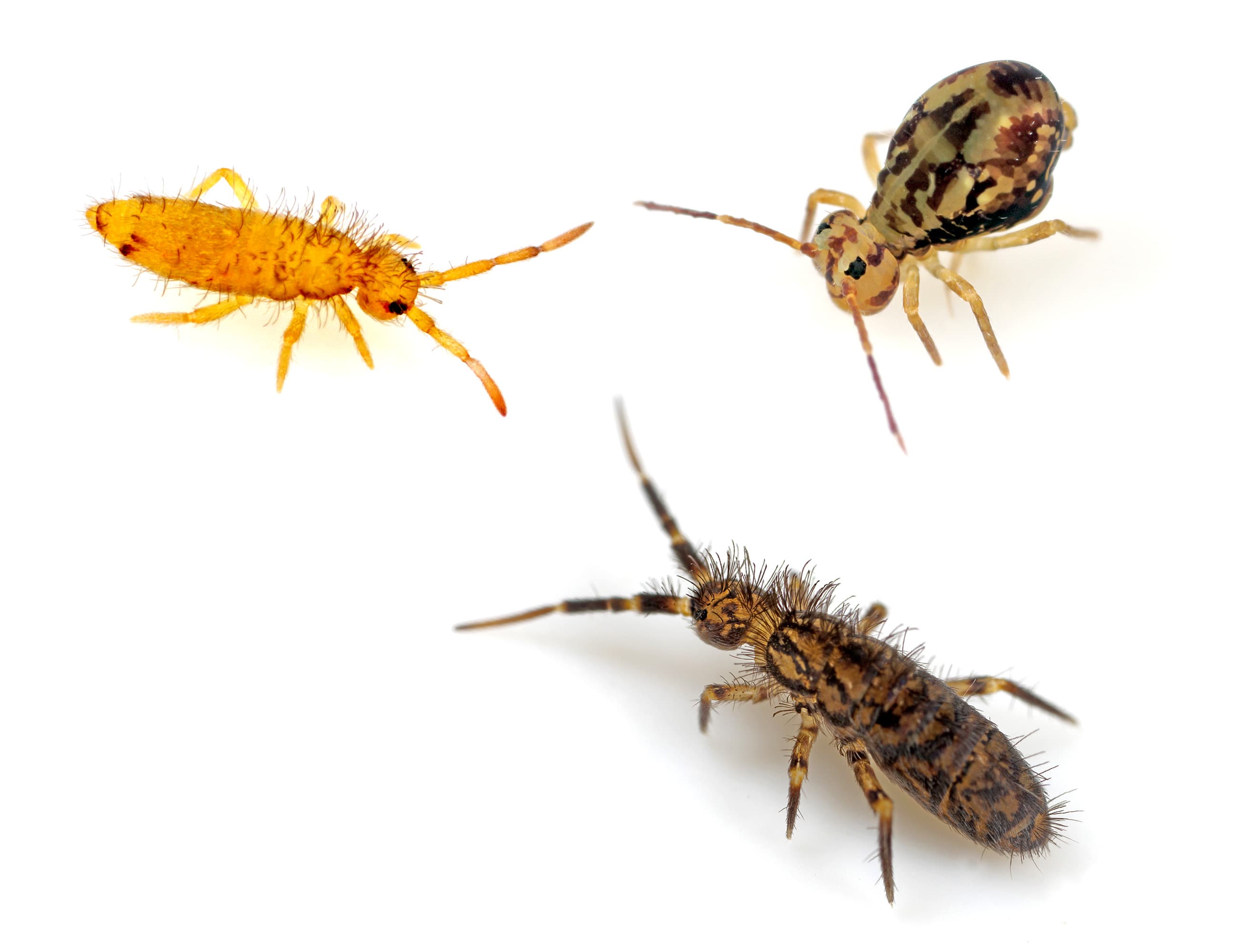Springtails
Collembola
Occasional InvadersSmall jumping insects (less than 1/4 inch) with a forked spring mechanism on the underside of the abdomen that allows them to jump. Usually dark colored. Found in moist decaying vegetation, mulch, and leaf litter. Occasional invaders into homes, particularly during migrations. A dark species called snow fleas may be present in winter. Harmless.

Control Methods
Recommended methods for controlling this pest
| Method | Type | Effectiveness | Requirements |
|---|---|---|---|
| Perimeter Insecticide Spray | Chemical | Required | |
| Drainage Correction Recommendations | Cultural | None | |
| Mulch Treatment | Chemical | Required | |
| Crawl Space Vapor Barrier Installation | Mechanical | None | |
| Habitat Modification for Moisture Pests | Cultural | None |
Common Harborage Locations
Where to find this pest during inspections
| Location | Why Found There | Priority |
|---|---|---|
| Basements | High humidity, cooler temperatures, stored items, potential for flooding, entry point from outside. | Critical |
| Crawl Spaces | Direct earth contact, very high humidity, minimal disturbance, abundant hiding spots, poor ventilation. | Critical |
| Mulch & Landscape Beds | Moisture retention, organic material, cover from predators, bridge to structure. | High |
| Dense Vegetation Against Building | Moisture retention, bridge to structure, protection from predators, food sources. | Medium |
| Leaf Piles | Moisture retention, protection from weather, food source through decomposition. | Medium |
| Potted Plants & Houseplants | Overwatered soil creates ideal breeding conditions for fungus gnats. Organic matter in potting soil supports fungal growth that larvae feed on. Standing water in saucers provides moisture. | Medium |
Important Disclaimer: The information provided in this knowledge base is for educational and reference purposes only. Pest management professionals should always consult current product labels, Safety Data Sheets (SDS), manufacturer instructions, and applicable local, state, and federal regulations as the definitive source of truth. Product formulations, application methods, safety requirements, and regulations may change over time. This information may be out of date and should not replace professional judgment, proper training, or required licensing and certifications.